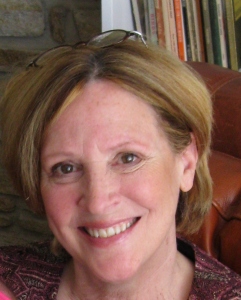This piece was published on the Parent.co Web site this week. It’s a piece I love:
Last fall, my friend spent Tuesdays in a utilitarian meeting room, sitting on a folding chair. The bad part was that “experts” expounded on topics like bonding, sleep patterns, and infant milestones, information she didn’t need since she had already ushered her own children into adulthood. The good part was the other grandmothers in the class, who told each other their stories. Tuesdays also brought paperwork and state mandates and social work regulations. Her new normal—the one she never saw coming—had just landed in her lap.
When her grandchild was born and it was clear the birth-parents could not be the caregivers, my friend— quietly at first—began with texts to the baby’s temporary foster parents in another state. She relished the photos. She would comment on “the sweetest little hands,” which, the next month, turned into “the cutest smile ever.” She sent books and clothes and every age-appropriate toy she could find.
It made sense that she’d be invested in giving this baby the best start she could. After all, she was the baby’s grandmother. I figured her role would be filling in the gaps until “real parents” could be found as soon as the Court ruled the adoption could go forward. Then, I thought, the social worker would consult the list of couples yearning for a baby, and a whole new family—a young family—would be created, and those parents would take over.
I was fooled. Partly because my friend carefully skirted the issue of the baby’s future, and because she’d indulge me in phone conversations that began with my saying things like, “I know this is sad, but there’s a young couple somewhere, just aching to have a baby and soon they’ll have one!” Looking back, only now do I remember her soft silences in response to my enthusiasm. She was probably averting her eyes, too, but I couldn’t see that.
I believed that in her life—as in mine—it would be unthinkable to dive back into the grinding mechanics of caring for an infant 24 hours a day. Much less summoning the reflexes to prevent a 3-year-old from darting into traffic. Or sitting—albeit proudly—in the audience at your kid’s high school graduation when you’re in your 80s.
When she finally told me she was beginning adoption proceedings, I told her all the reasons she was making a terrible, immutable mistake. I warned her that once the baby arrived in her home, no matter how difficult the going got, she would never be able to turn back to her old life—her sane, comfortable, predictable life—with me as her sane, comfortable, predictable friend. “How fair is that?” I asked. Not to her and not to her grandchild. Not when there were prospective (young) parents, waiting so hopefully in the wings.
She approached my logic with statistics, about the numbers of babies who have been rescued by willing grandparents, 2.7 million nationwide. About her distrust of the system the baby would be thrown into, even for a short time, and the damage that could be done. Then she refuted my logic with emotion. The term “grandfamilies” has entered the lexicon. The baby was part of her extended family. The baby was her family.
Her mind was made up, and I was left to look at what my rational arguments said about me. I wanted our two lives to stay on the intended arc we envisioned together, the continuation of everything we’d shared. We always had each other as we parented our young children. Then came the teenagers and the college years. We hosted weddings, then baby showers. Now we were supposed to be free to go out to lunch, learn to play golf, discuss politics, or gossip idly without any interruptions. What about our bucket lists?
It turns out her baby loves eating in restaurants. Watching people go by. Sampling new foods. Playing peek-a-boo with the waiter. I look at my friend, enveloped in all of it. She’ll be called “Nana,” she tells me. The baby is beautiful.
There are all kinds of bucket lists.
